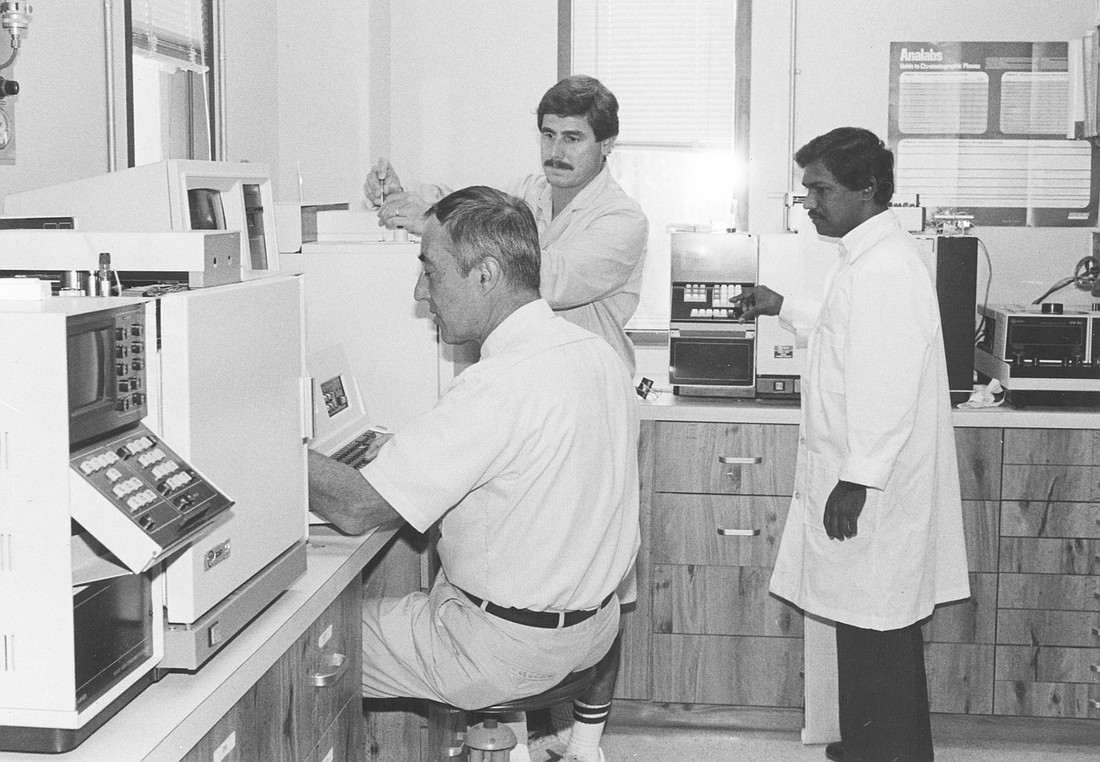- April 18, 2024
-
-
Loading

Loading

The laboratory that became Mote was founded with a single request from the philanthropic Vanderbilt family to Eugenie Clark.
“Start a place here where people can learn more about the sea,” they asked.
On Jan. 22, it was clear Clark fulfilled that goal: More than 200 supporters gathered to celebrate the organization’s diamond anniversary. They reflected about how Mote began as a one-room laboratory and has grown into a world-class research institution.
The big news of the evening was Mote’s “Oceans of Opportunity” fundraising drive that seeks to raise $50 million — and has already raised $30 million toward its goal.
The other major announcement was news of an expansion of Mote’s research facility on Summerland Key in the Florida Keys that a $5.14 million donation from the Sarasota-based Gardener Foundation will kickstart.
Closer to home, Mote is still seeking to grow. In October, the Sarasota City Commission declined to endorse the vision of Michael Crosby’s, who became Mote’s president/CEO in 2013, for bayfront land to expand its aquarium that’s growing beyond its capacity.
A Mote spokeswoman told the Longboat Observer that staff has no update about the aquarium.
But whatever the future holds for Mote, it was clear Thursday night that Mote is a growing fish in the sea of marine research.
“It is absolutely crucial to enable Mote to increase our ability to implement world-class research initiatives, to recruit and nurture the next generation of scientists of educators, to translate and transfer the science and the technology for the betterment of society and the marine environment and, of course, to provide continued public service to our community,” Crosby said.
Delving into history
The Vanderbilt family first invited Clark to Englewood to give a lecture after Anne Vanderbilt read Clark’s book, “Lady With a Spear,” and urged her husband, Bill Vanderbilt to read it. In the book, Clark described a small, isolated marine biology laboratory in the fishing town of Ghardaqa, Egypt, where Clark had studied fishes for a year in 1951, as a Fullbright research scholar.
The Vanderbilts’ 10-year-old son, Bill Jr., had a bedroom full of aquariums, just like Clark did when she was a child.
Many local children and fishermen attended Clark’s talk about Red Sea fishes, which she thought would have limited appeal, but she learned from the public that for almost every unusual fish she displayed on slides, there was a similar fish that had been seen in Englewood.
After the lecture, Bill Vanderbilt approached Clark with a request that came with no strings, contracts or promises attached — just a request that Clark create “something like the lab you described in your book,” Clark recalled in her 1969 memoir, “The Lady and the Sharks.”
Clark accepted, and in January 1955, she, her husband and baby daughters moved to Placida, where the Vanderbilts owned 36,000 acres of land to open Cape Haze Marine Laboratory. The lab quickly gained a reputation for its shark research.
It moved in 1960 to the south end of Siesta Key. By the mid-1960s, the Vanderbilts moved north, and Clark accepted a professorship at the University of Maryland: Dr. Perry Gilbert became responsible for research and William Mote headed business operations and philanthropic support. The lab was named Mote in 1967 in honor of the Mote family.
Grass roots
In a 2013 interview with the Longboat Observer, President Emeritus Kumar Mahadevan recalled driving in 1975 to Mote to ask for a job. He knew about Mote’s research from his studies in his native India, but when he stopped for directions, he learned that many people in Sarasota had never heard of Mote.
Mahadevan was hired in 1978, the same year Mote moved to City Island. He became president/CEO of Mote in 1986, and last year he recalled when the shark tank opened in 1988. On its first day, it drew 22,000 people. Its success caused Mote to focus more on its aquarium because attendance provided revenue and created community interest.
Today, Mote’s reach is constantly growing: It now has a 200-acre aquaculture park in eastern Sarasota County, research field stations on Pine Island in Charlotte Harbor and Summerland Key in the Florida Keys, satellite offices in Punta Gorda and Boca Grande and a second public outreach exhibit dedicated to coral reefs in the Eco-Discovery Center in Key West. It also offers science-based curricula through various Web- and science-based platforms, allowing Mote to reach students around the world.
The community played a key role in Mote’s beginnings and will continue to do so in the future.
“Passion, partnership and philanthropy and these are core values that continue to drive our research mission and our education, even today,” Crosby said.
2020 Vision
Mote seeks to accomplish the following goals by 2020:
• Expand its annual budget from $21 million to more than $25 million;
• Increase its team of Ph.D. scientists from 35 to more than 45; and increase staff from 210 now to more than 235;
• Sustain and nurture Mote’s 1,600 volunteers;
• Increase membership from 9,000 to 12,000;
• Increasing its annual economic impact in Florida from $86.8 million to $145.8 million